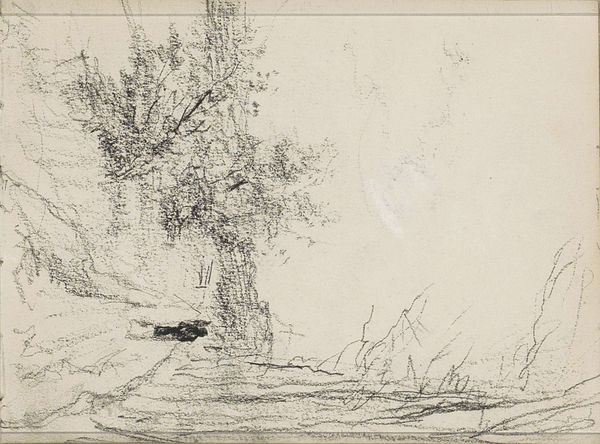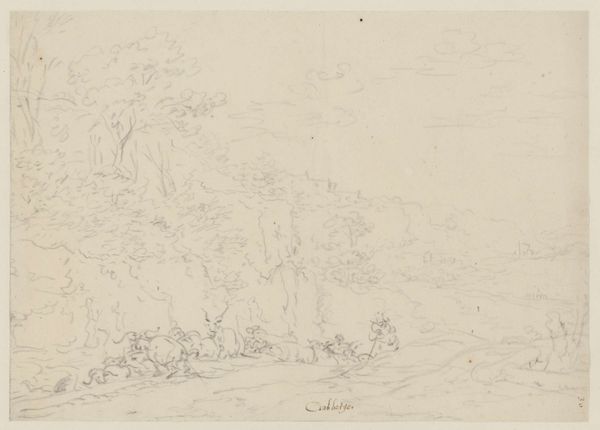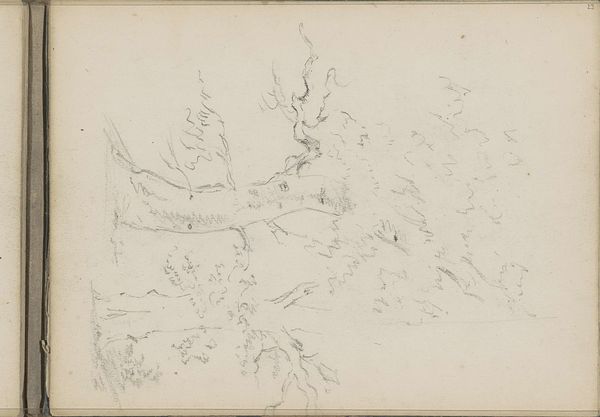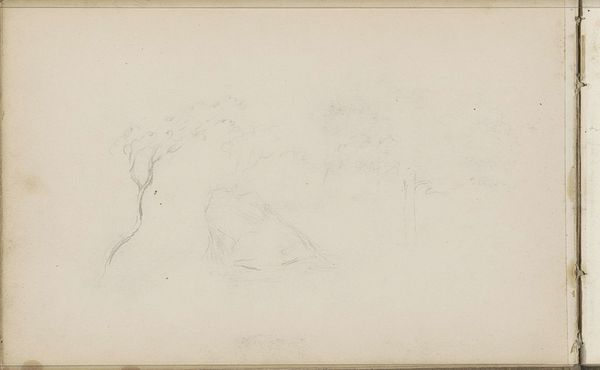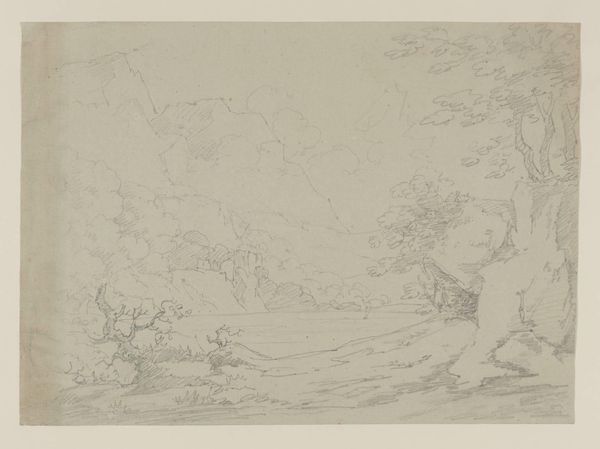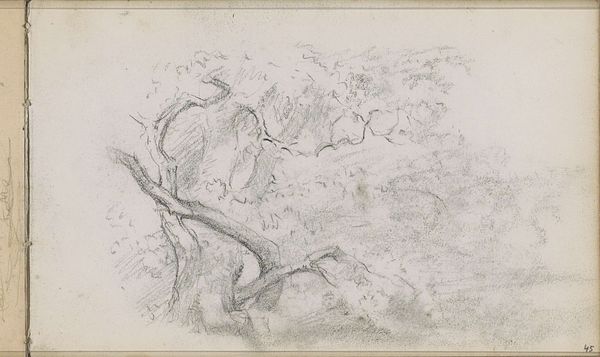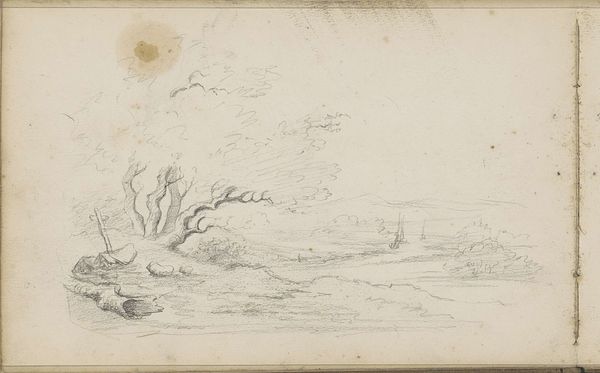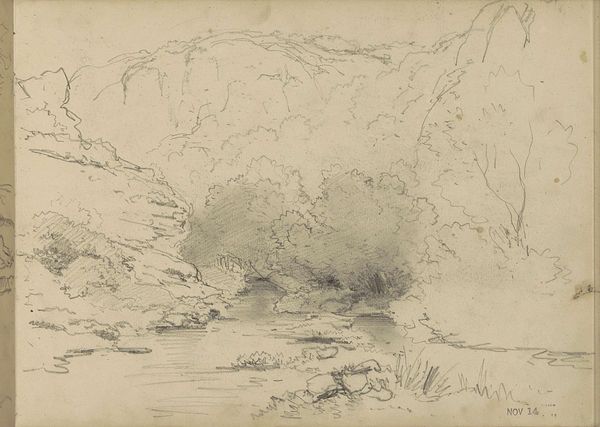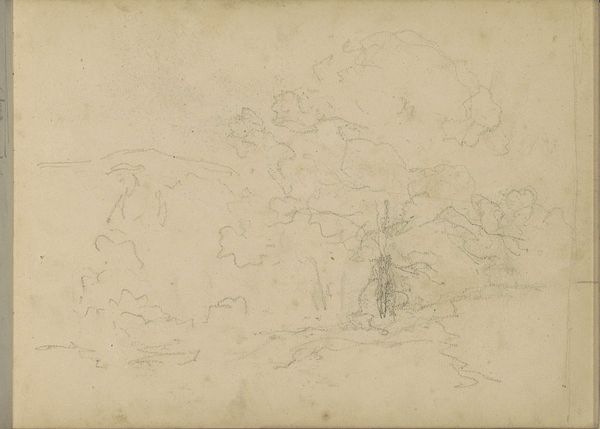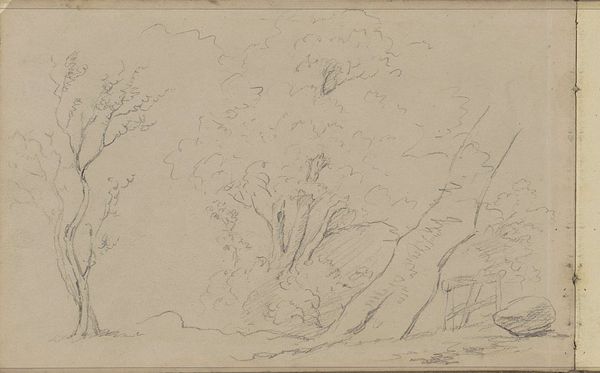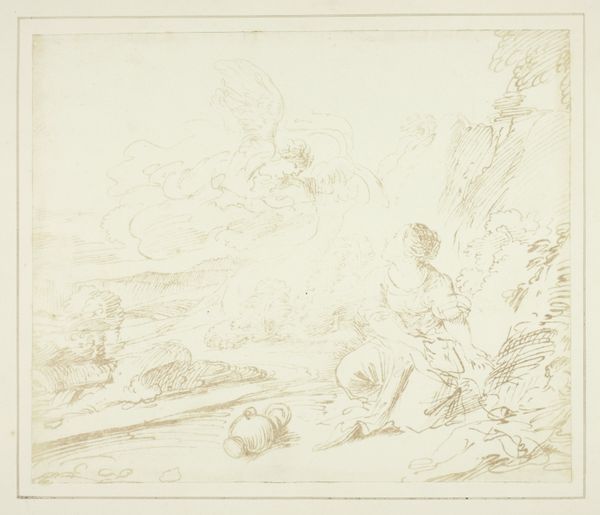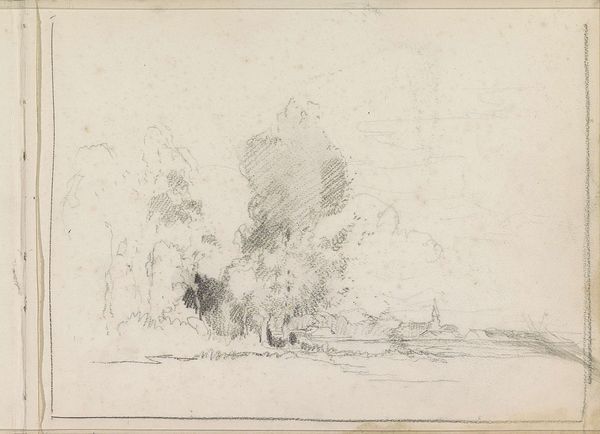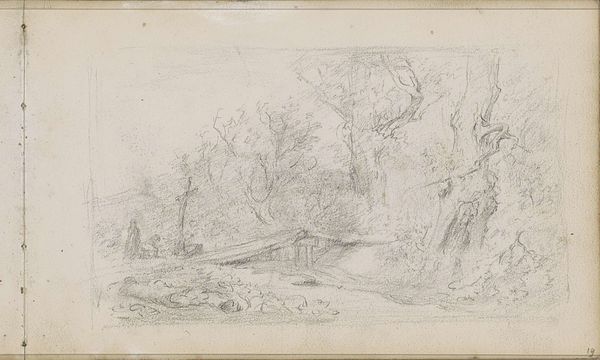
Dimensions: height 225 mm, width 295 mm
Copyright: Rijks Museum: Open Domain
Curator: This delicate pencil drawing is "Wandelaars op een pad bij een bosrand" – or "Wanderers on a Path by a Wood’s Edge" – by Willem Cornelis Rip, created in 1874. Editor: It has such a fleeting, ethereal quality, doesn't it? Like a half-remembered dream of a woodland walk. I'm immediately drawn to how the pencil work almost dissolves into the paper. Curator: Precisely. Consider the labor involved: Rip skillfully employed pencil on paper, readily available and relatively inexpensive materials. His mark-making brings our attention to the act and economics of artistic creation, setting it in context with everyday resources of the late 19th century. The artistic choices undermine a singular precious "masterpiece". Editor: I see that. But even with the understated materials, it conjures the archetypal symbolism of the forest, doesn’t it? The lone tree as a sentinel, the path suggesting a journey… even the two figures in the background seem to represent a kind of pilgrimage. They appear like wanderers caught between light and shadow. The overall mood conveys the idea of something being just beyond our grasp, or lost. Curator: Or consider this ‘loss’ from a production perspective: what labor and time and indeed skill went into manufacturing the pencil and the paper, bringing those together for this sketch, the time perhaps not valued due to this type of art being seen as less than. Editor: But aren't those absences deliberate, contributing to that feeling of something felt rather than known? Look at how Rip renders the trees—they are more suggestion than precise botanical representation. Almost like the memory of a tree rather than the tree itself. A symbol for a deeper, more abstract presence within the natural world. The lack of sharp detail emphasizes the emotional impact and allows for universal identification with the peace sought in nature. Curator: That universal identification can perhaps be seen in a larger social framework, as this drawing could appeal to many and the artist wasn't limited to patrons who could afford to collect and showcase the "masterpieces", opening art to a wider market of viewers. Editor: I suppose the lack of strong contrast and overt symbolism invites more inclusive interpretations, letting everyone bring their meanings to that walk. Curator: It challenges those in power that have held a stranglehold on the narrative. Editor: Very true. It’s a compelling piece when examined from so many angles. I hadn’t expected to see so much in a pencil sketch!
Comments
No comments
Be the first to comment and join the conversation on the ultimate creative platform.
